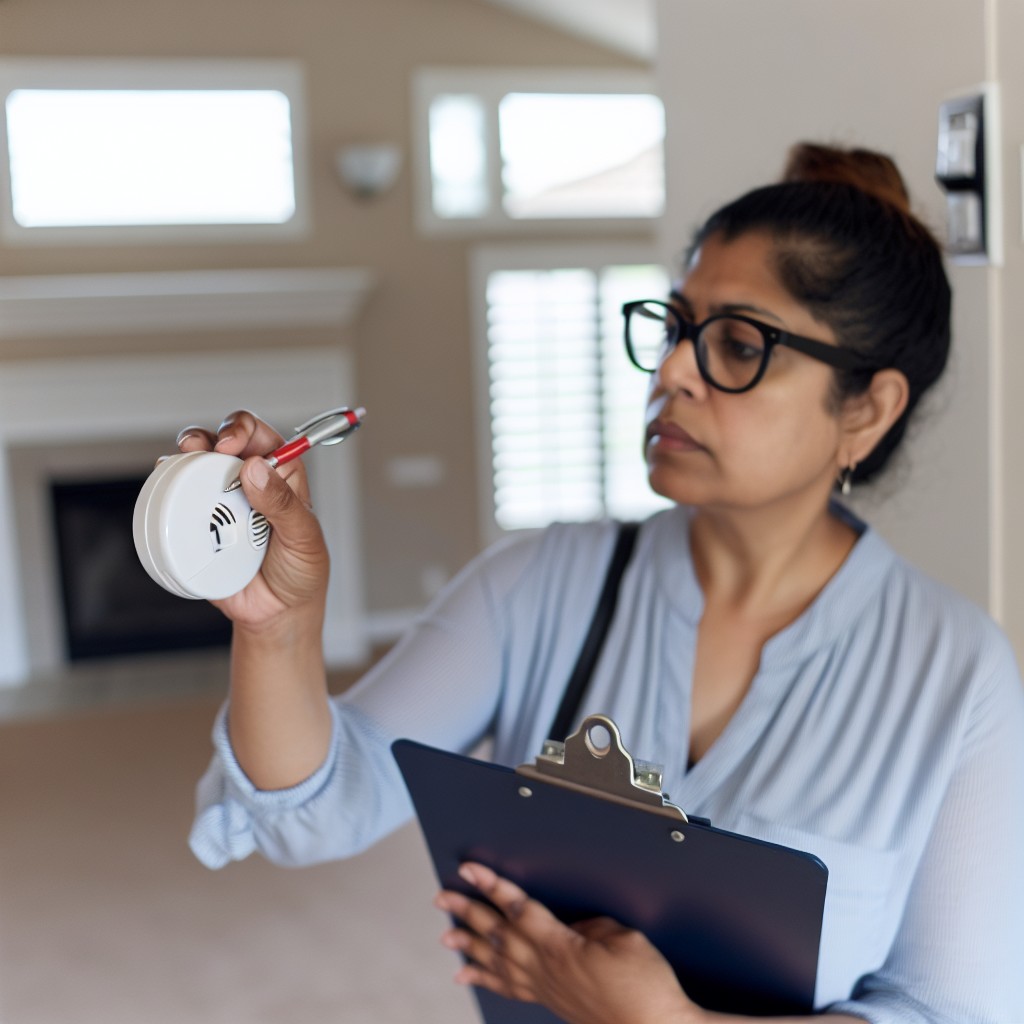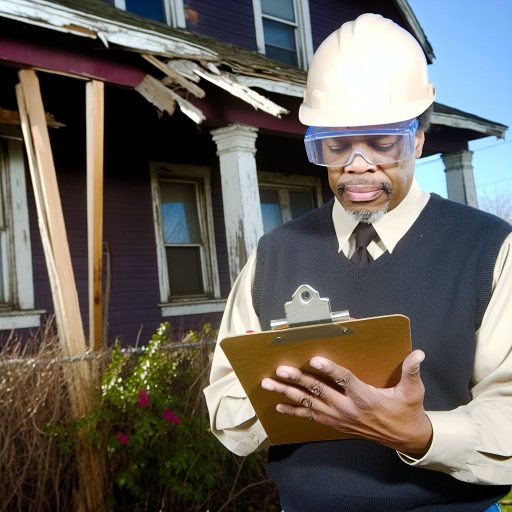Introduction to Safety Inspections for Rental Properties
Safety inspections are crucial for rental property owners.
These inspections help identify potential hazards.
They also ensure compliance with local regulations.
Landlords benefit from regular safety checks.
These evaluations protect tenants and property alike.
Moreover, they enhance tenant satisfaction and retention.
The Importance of Regular Safety Inspections
Regular safety inspections identify issues before they escalate.
Property owners can save money through timely repairs.
Additionally, inspections reduce liability risks.
This proactive approach fosters trust with tenants.
Consequently, it creates a safer living environment.
Key Areas to Inspect
Focus on several essential areas during safety inspections.
- Electrical systems should be checked for faults.
- Plumbing fixtures need inspection for leaks.
- Smoke detectors require regular testing.
- Heating and cooling systems should be maintained.
- Emergency exits must be clearly marked and accessible.
Documentation and Reporting
Keeping accurate records is vital for property owners.
Document findings during every inspection.
This includes photos, repair dates, and contractor information.
Such documentation supports future decision-making.
It also provides evidence of compliance if required.
Understanding the Importance of Safety Inspections
Protecting Tenants’ Well-Being
Safety inspections play a critical role in protecting tenants’ well-being.
They identify potential hazards early, reducing the risk of accidents.
Regular checks foster a sense of security among renters.
A safe living environment encourages tenant satisfaction and retention.
Minimizing Financial Liability
Neglecting safety inspections can lead to significant financial liability.
Injuries or accidents could expose property owners to lawsuits.
Conducting inspections helps mitigate risks and minimize insurance claims.
A proactive approach can save landlords money in the long run.
Ensuring Compliance with Regulations
Local laws often mandate safety inspections for rental properties.
Failure to comply can result in fines or penalties.
Regular inspections ensure adherence to safety codes and regulations.
This compliance protects landlords from legal issues.
Enhancing Property Value
Regular safety inspections contribute to the overall value of a rental property.
A well-maintained property attracts higher quality tenants.
Good maintenance practices enhance the property’s reputation.
Ultimately, this can lead to a more profitable investment.
Key Safety Inspections Every Rental Property Should Include
Fire Safety Inspections
Regular fire safety inspections are essential for protecting tenants.
Inspect smoke detectors and carbon monoxide alarms monthly.
Ensure all units have clear evacuation routes and visible exit signs.
Schedule annual checks for fire extinguishers and replace as needed.
Electrical System Inspections
A qualified electrician should inspect the electrical system regularly.
Check for outdated wiring, circuit breakers, and electrical outlets.
Address flickering lights or malfunctioning outlets immediately.
Test GFCI outlets monthly to ensure they are working correctly.
Plumbing Inspections
Inspect plumbing systems for leaks and water damage at least twice a year.
Monitor water pressure and ensure all faucets function correctly.
Flush water heaters annually to prevent sediment buildup.
Check drains for clogs and promptly handle any slow drainage issues.
HVAC System Inspections
Schedule professional HVAC inspections biannually.
Replace filters every three months to maintain air quality and efficiency.
Ensure the entire system functions properly and meets local codes.
Address strange noises or smells immediately to prevent bigger issues.
Building Structure Inspections
Regularly check the building’s exterior for signs of wear or damage.
Look for cracks in the foundation, walls, or ceiling.
Ensure windows and doors close properly and provide security.
Inspect roofs for leaks and clean gutters to prevent water damage.
Safety and Security Inspections
Implement security system checks every few months.
Ensure locks on doors and windows are functional and secure.
Review any surveillance footage to address potential security concerns.
Consider tenant feedback for any safety issues they identify.
You Might Also Like: Step By Step Insights On Conducting Thorough Property Inspections For Owners
Timeframes for Conducting Safety Inspections
Understanding Inspection Frequency
Rental property owners must regularly conduct safety inspections.
These inspections help identify potential hazards.
Additionally, they ensure compliance with local regulations.
Furthermore, timely inspections enhance tenant safety and comfort.
Annual Inspections
Most experts recommend annual safety inspections for rental properties.
Conducting these inspections allows for thorough evaluations.
During an annual inspection, check smoke detectors and carbon monoxide detectors.
This is also a good time to examine fire extinguishers.
Regularly replacing batteries and checking expiration dates is crucial.
Seasonal Inspections
In addition to annual checks, seasonal inspections are beneficial.
These inspections focus on specific aspects depending on the season.
For example, in winter, assess heating systems to ensure efficiency.
In spring, evaluate outdoor areas for safety hazards.
This includes checking handrails and stairs for wear and tear.
Post-Tenant Inspections
Another important inspection occurs after a tenant vacates.
This inspection assesses any damage or safety concerns left behind.
Addressing issues before new tenants move in is essential.
Make necessary repairs to maintain property value and tenant satisfaction.
Regular Maintenance Checks
Incorporate regular maintenance checks in your routine.
These checks can complement your safety inspections.
Inspect plumbing, electrical systems, and appliances periodically.
This proactive approach minimizes potential hazards and costly repairs.
Ultimately, consistent checks ensure a safe living environment for tenants.
See Related Content: Common Rental Property Repairs and How to Handle Them
Legal Requirements and Regulations for Safety Inspections
Understanding Local and State Laws
Property owners must know their local laws regarding safety inspections.
Each state has specific regulations governing rental properties.
For example, some states require annual safety inspections.
Others may have different schedules based on property type.
Essential Inspections for Compliance
Landlords must ensure properties meet building codes.
Electrical systems should undergo regular inspections.
Safety checks for gas appliances are also necessary.
- Check smoke detectors and CO detectors.
- Test fire alarms and emergency lighting.
Documentation and Record-Keeping
Keeping detailed records of inspections is crucial.
Property owners should document all safety checks performed.
This includes dates, findings, and corrective actions taken.
Proper documentation can protect landlords from legal issues.
Consequences of Non-Compliance
Failure to meet safety inspection regulations can lead to fines.
Landlords may also face lawsuits from tenants for unsafe conditions.
Therefore, maintaining compliance mitigates risks and liability.
Ultimately, a proactive approach enhances tenant safety.
Delve into the Subject: Eviction Laws and Legal Steps for Property Owners

Tips for Preparing for a Safety Inspection
Understand Inspection Requirements
Familiarize yourself with local regulations.
Know what safety codes apply to your property.
Check for any upcoming changes in laws.
Document the specific requirements for your region.
Conduct a Pre-Inspection Walkthrough
Walk through your property to identify issues.
Look for visible hazards in common areas.
Check individual units for safety equipment.
Make note of repairs that need immediate attention.
Inform Your Tenants
Notify tenants about the upcoming inspection.
Encourage them to report any safety concerns.
Provide clear instructions about accessibility.
Ensure that areas remain accessible during the inspection.
Prepare Necessary Documentation
Gather all relevant reports and records.
Include previous inspection results and repair logs.
Compile maintenance records for appliances and systems.
Organize any warranties for safety equipment.
Address Minor Repairs
Fix small issues before the official inspection.
Replace burnt-out light bulbs in hallways.
Ensure that smoke detectors are operational.
Tighten loose handrails and stairs to prevent accidents.
Create a Checklist
Develop a checklist of safety features to review.
Include fire extinguishers and alarms in your list.
Verify the condition of exit signs and emergency lighting.
Make sure to check all fire escapes and exit routes.
Delve into the Subject: Property Inspections for Property Tax Assessments
Common Safety Hazards to Look Out For During Inspections
Electrical Hazards
Electrical hazards can pose significant risks to tenants.
Inspect wiring for fraying, exposed conductors, or improper installations.
Ensure outlets are functional and grounded properly.
Additionally, look for overloaded circuits that could lead to fires.
Fire Safety
Fire hazards should always be a top priority during inspections.
Check smoke detectors to ensure they are in working order.
Evaluate the presence of fire extinguishers in key areas.
Furthermore, examine escape routes for obstructions or hazards.
Structural Integrity
Inspect the structural integrity of the building regularly.
Look for signs of water damage, such as stains or mold growth.
Examine walls, ceilings, and floors for cracks or weaknesses.
In addition, check windows and doors for proper sealing and security.
Hazardous Materials
Hazardous materials can be detrimental to tenant health.
Identify any potential lead paint and asbestos in older properties.
Ensure proper handling and disposal methods are in place.
Moreover, keep an eye out for toxic molds in damp areas.
General Safety Features
General safety features significantly enhance tenant security.
Inspect staircases and railings for stability and security.
Evaluate lighting in common areas for adequate visibility.
Finally, verify that all entry points have secure locks.
How to Address and Follow Up on Safety Inspection Findings
Understanding the Importance of Follow-Up
Follow-up actions after safety inspections are crucial for maintaining safety standards.
They help ensure that any identified issues are properly resolved.
Additionally, addressing findings promptly can prevent accidents.
Moreover, consistent follow-ups build trust with tenants.
Documenting Inspection Findings
Begin by documenting all findings from the safety inspection.
Use clear and concise language for better understanding.
Include photographs to visually support the issues identified.
Organize the findings based on severity and urgency.
For instance, categorize issues into critical, moderate, and minor categories.
Prioritizing Safety Issues
Next, prioritize the identified safety issues.
Focus on the most critical issues that pose immediate risks.
Address serious issues like electrical hazards first.
Then, move on to moderate and minor issues incrementally.
Developing an Action Plan
Create an action plan specifying how to address each issue.
Assign responsibilities to qualified personnel for repairs.
Set realistic deadlines for completing the repairs.
Moreover, outline necessary resources for resolving each issue.
Communicating with Tenants
Inform tenants about the safety inspection findings and required actions.
Provide updates on the status of repairs and timelines.
Encourage tenants to report any additional safety concerns.
This transparency fosters a cooperative relationship.
Conducting Follow-Up Inspections
After repairs are completed, conduct follow-up inspections.
This ensures that all issues have been adequately addressed.
Document the results of follow-up inspections to maintain records.
Share these results with tenants to demonstrate commitment to safety.
Maintaining a Safety Culture
Lastly, foster a culture of safety within the rental property.
Regular training sessions can keep everyone informed about safety standards.
Encourage open discussions about safety among tenants and staff.
Continuous awareness can help prevent future safety issues.




